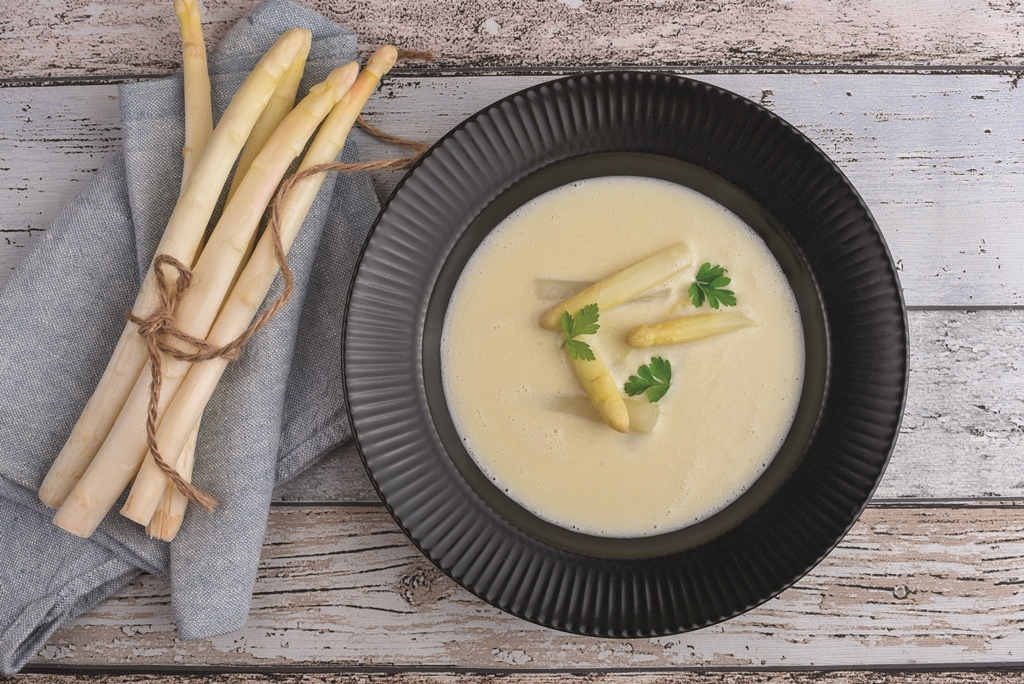It announces the return of the beautiful days...
Considered as the queen of vegetables since the 16th century, asparagus is a product of Alsatian soil with many virtues.
ALSACE ASPERAGE, THE ONLY ONE PROTECTED by a PGI
Asparagus is a flagship product of Alsace, with a tradition of cultivation dating back more than 400 years. But did you know that the white asparagus of Alsace is the only French asparagus protected by a PGI (Protected Geographical Indication) since 1996? This means that only asparagus grown in Alsace and meeting precise criteria can be labeled “Asperge d’Alsace”.
An association to promote the Alsatian asparagus
The Association for the Promotion of Alsatian Asparagus (APA) is an organization that aims to promote and develop asparagus produced in Alsace. It works in collaboration with producers, distributors and restaurant owners to encourage the consumption of Alsatian asparagus, highlighting its gustatory and nutritional qualities as well as its local and seasonal character. The APA also organizes
events and activities to educate the general public about growing and eating Alsatian asparagus, and is committed to maintaining high quality standards to ensure consumer satisfaction.

NOT TO BE MISSED!
Among the traditions linked to asparagus in Alsace, there is a “Fête de l’asperge” organized since 1932 in the commune of Hoerdt. This popular festival celebrates all
every year the season of the asparagus, with tastings, animations, culinary contests, parades and the election of Miss and Mister Asparagus. It is an opportunity for visitors to discover the richness of asparagus production in Alsace and to taste local dishes accompanied by good Alsatian white wine. This year’s event will take place on Sunday, May 14.
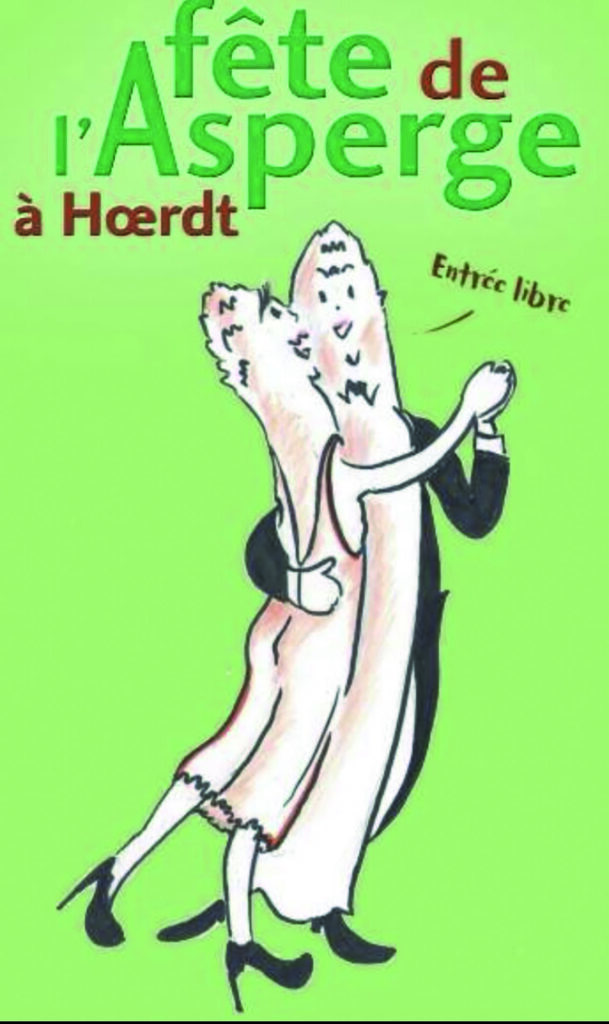
Land of asparagus
The cultivation of asparagus in Alsace dates back to the Middle Ages, but it is from the 18th century that production began to develop, especially in the Strasbourg region. In the 19th century, Alsatian asparagus was already renowned for its quality and was exported throughout Europe. It was particularly appreciated in Russia, where it was considered a luxury product.
In the 1950s, Alsatian asparagus production exploded, with nearly 6,000 hectares under cultivation. However, competition from foreign asparagus gradually caused Alsatian production to fall.
Today, Alsace has 225 producers for an annual production of about 2000 tons on 450 hectares, with a distribution of 2/3 for the Bas-Rhin and 1/3 for the Haut-Rhin, according to the association Asperge d’Alsace.
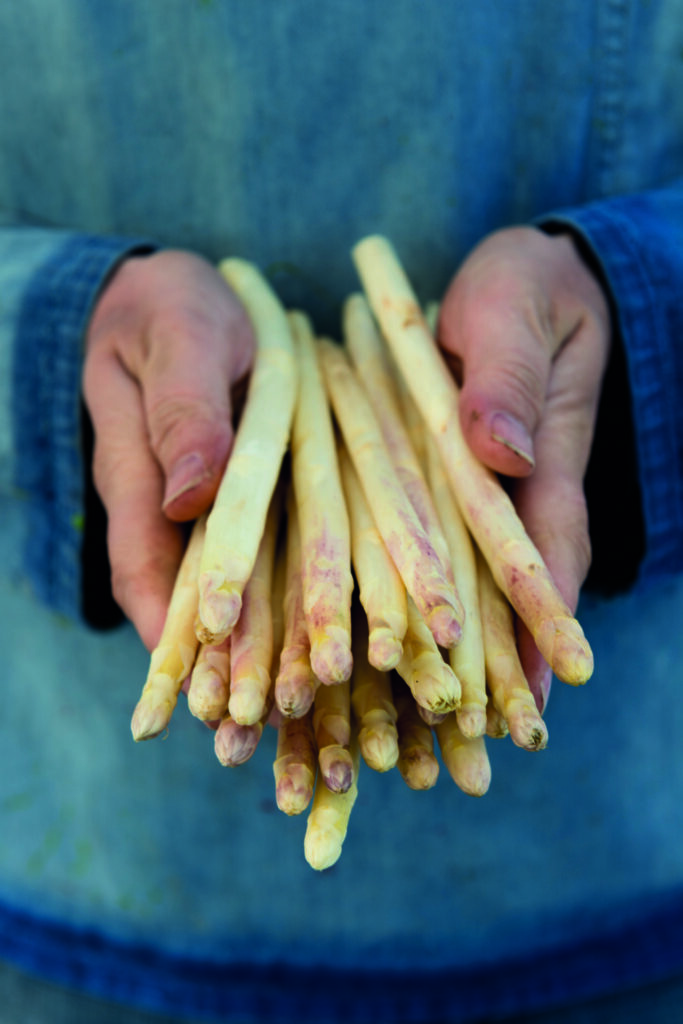
DID YOU KNOW?
During the First World War, asparagus was used for strategic purposes: German soldiers dug tunnels under the asparagus fields to be able to advance without being spotted by enemy planes.
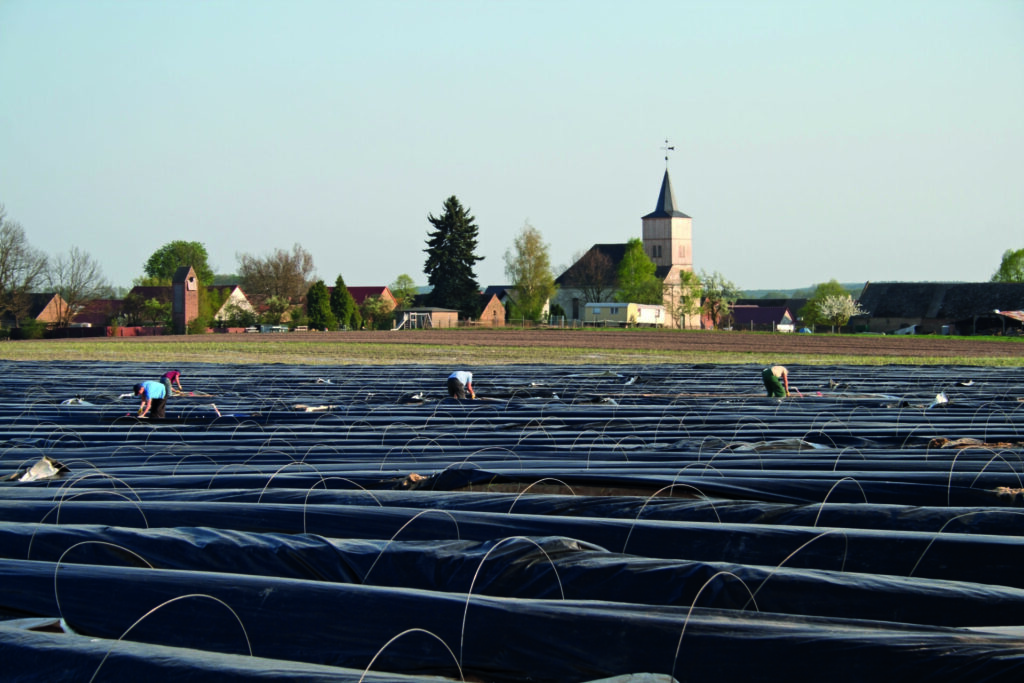
The varieties
There are several varieties of asparagus, each with its own characteristics:
White asparagus:
it is the most known and the most commonly consumed in France. It is grown underground to prevent photosynthesis and pigmentation, which gives it its characteristic white color.
Green asparagus:
This variety is grown above ground, which allows it to develop its chlorophyll and turn green. It has a more pronounced flavor than white asparagus.
Purple asparagus:
this variety is a hybrid between white and green asparagus. It is partially exposed to sunlight, which gives it a purple color on the upper third of its stem.
Wild asparagus:
This variety grows in the wild and can be difficult to find. It is finer than cultivated asparagus and has a more intense flavor.
There are also other varieties of asparagus, such as wood asparagus, purple asparagus, sand asparagus, etc., and their unique characteristics allow them to be used in different recipes.
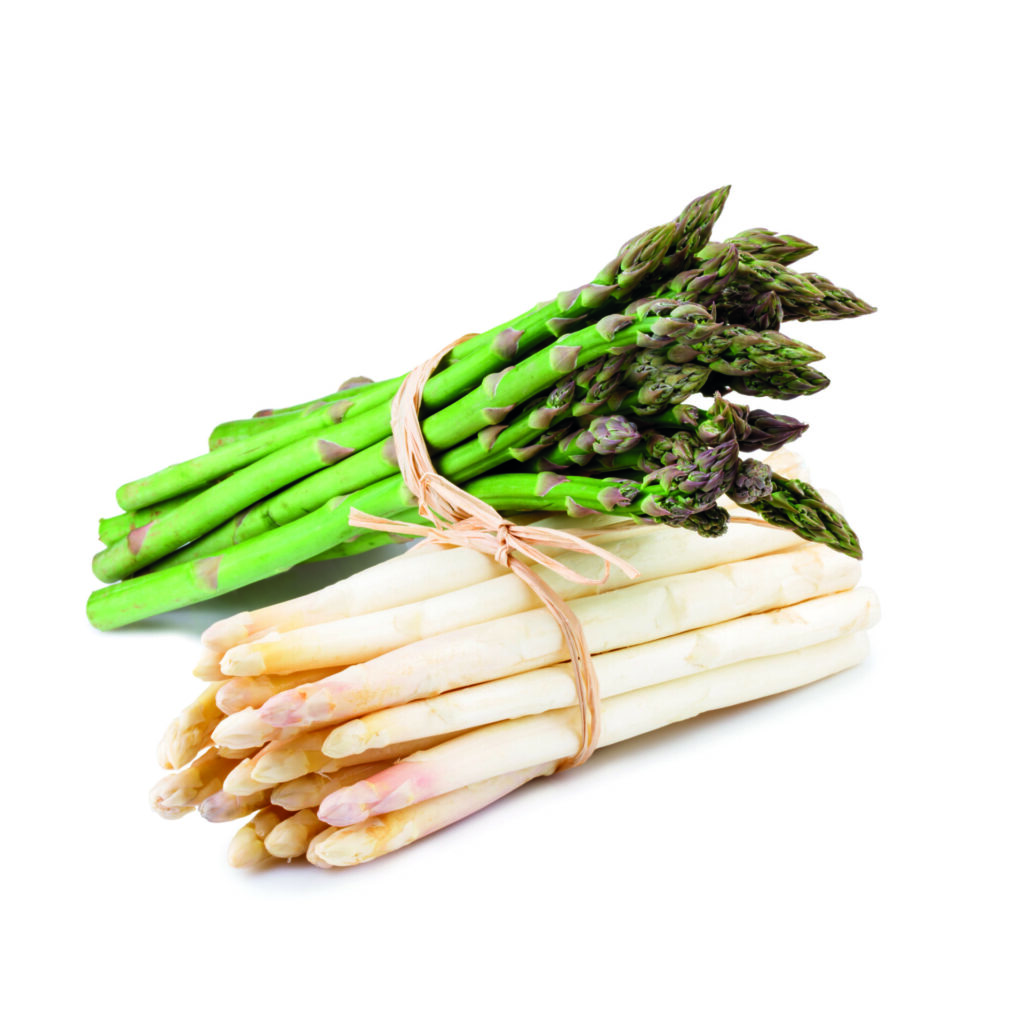
White asparagus from Alsace
Asparagus is a popular vegetable widely grown in Alsace.
The white asparagus, a local variety called “Asperges d’Alsace”, is particularly appreciated for its delicate flavor and tender texture. It is often prepared with a hollandaise sauce or a beurre blanc sauce.
The asparagus season in Alsace generally begins in early April and lasts about eight weeks. Meanwhile, asparagus is an important part of local markets, restaurants and home cooking.
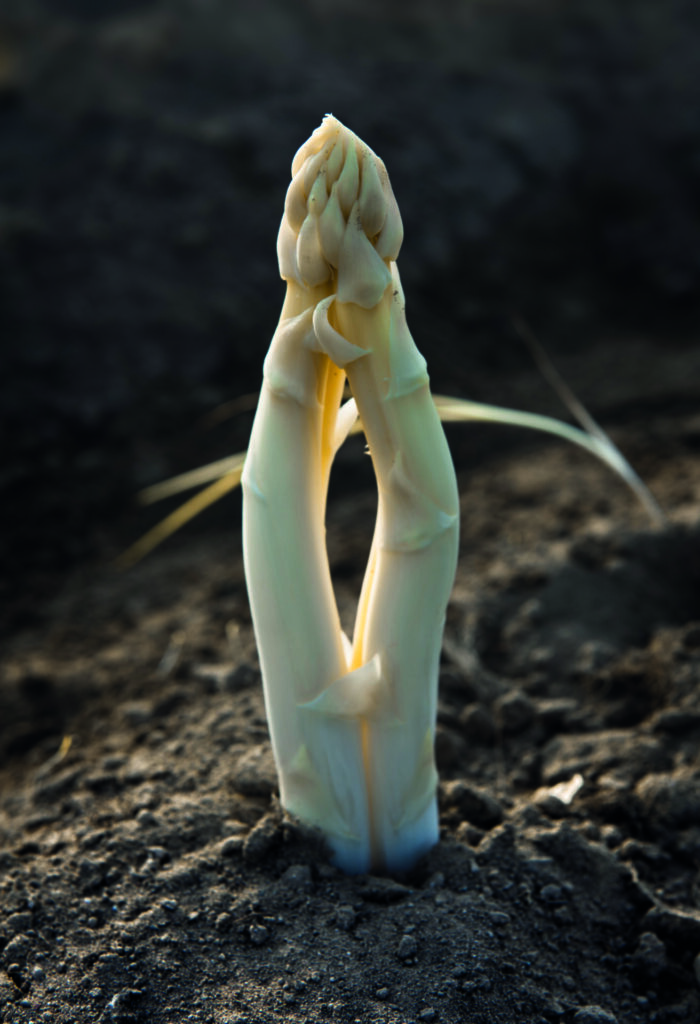
High nutritional value
In addition to being delicious, asparagus is a very nutritious and low-calorie vegetable, making it an excellent choice for a healthy diet. It is rich in fiber, vitamins (including A, C, E and K), minerals (such as iron, calcium and potassium), and minerals (such as iron and potassium).
sium) and antioxidants. In addition, asparagus contains active compounds that may have health benefits, such as anti-inflammatory and diuretic properties.

Recipe ideas
In Alsace, asparagus is often cooked in a simple way to preserve its delicate taste.
But the region also loves gourmet dishes, of which here are some traditional recipes.
Asparagus with ham :
Wrap the boiled asparagus in a slice of ham and bake in the oven with grated cheese and a béchamel sauce.
Asparagus salad:
cut the boiled asparagus into pieces and mix with hard-boiled eggs, tomatoes, onions and a vinaigrette made with olive oil and balsamic vinegar.
Flemish style asparagus :
serve asparagus cooked in salted water with melted butter, parsley and crumbled hard-boiled eggs.
Asparagus gratin:
Place the boiled asparagus in an ovenproof dish and add a béchamel sauce, grated cheese and gratinate.
Asparagus Pie:
Fill a shortcrust pastry with boiled asparagus whites, a mixture of eggs and fresh cream, lardons and grated cheese, then put in the oven.
Enjoy your meal!
